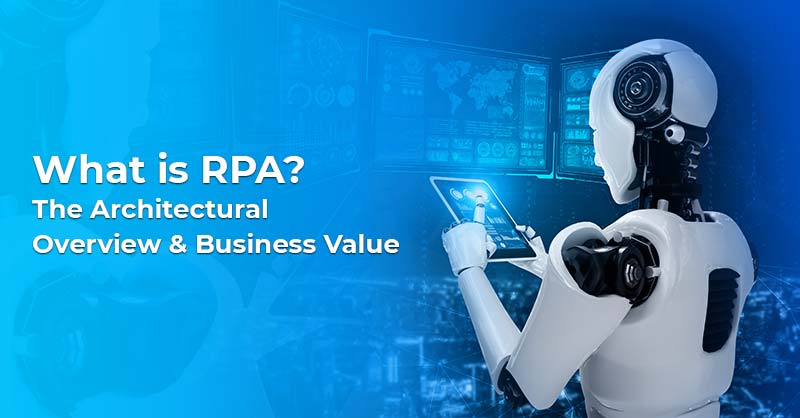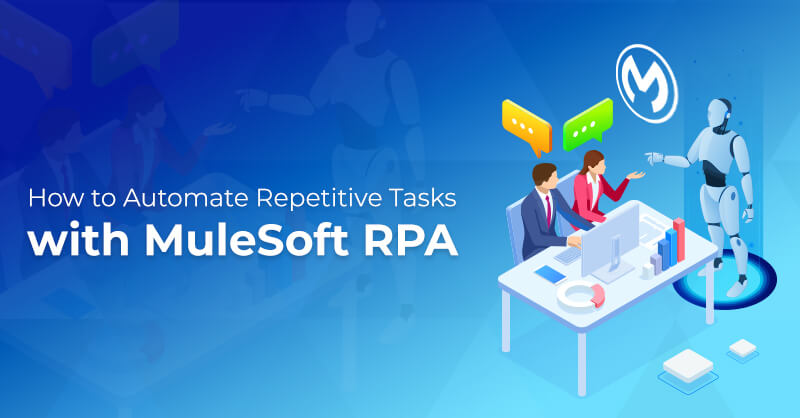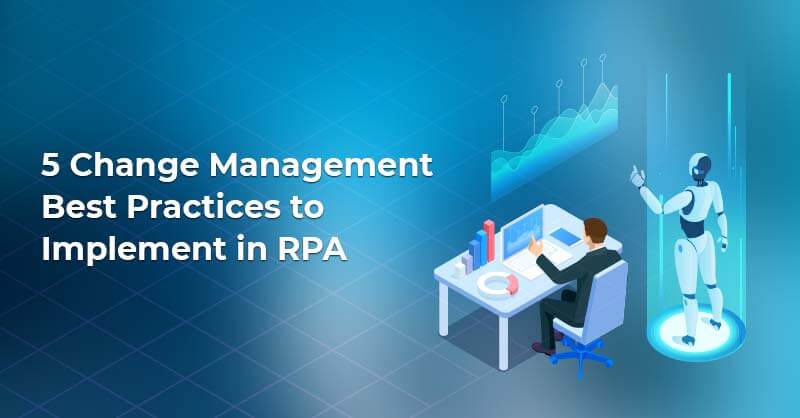Scaling Your Enterprise through an Automation Operating Model
Written by Imran Abdul Rauf
Technical Content WriterA robust automation operating model is required to scale the success of an enterprise’s automation program. And organizations wish to transform from the initial RPA proof of concept and create a proper automation strategy with an operating model.
This blog will discuss an automation operating model, its core principles, the four stages, and getting ready to build a fully automated enterprise.
What is an automation operating model?
The automation operating model is a template employed in RPA programs, including IT automation readiness, strategic vision, citizen model, control framework, and informed strategy, among various others. The template is a top-down activity based on enterprise-centric goals and objectives, is unique for every company, and is mainly managed by upper-level management.
The AOM principles
Businesses wanting to operate at scale and acquire maximum enterprise-level benefits typically asks the following questions.
- How to get started to scale quickly?
- What resources are required to be self-sufficient?
- How to organize our teams and resources for successful automation campaigns?
We have four principles for the automation operating model to answer the above questions and operate at scale.
- It is imperative to design a robust governance framework or model that should balance the pace of deployment without affecting the control & quality of the program.
- Create a route to production that extracts optimum automation potential and maintains control and procedural compliance.
- Deploy an adaptable operating model that supports functions and modifies operating models conveniently.
- Use existing processes, tools, and proven practices in the AOM design.
From initiation to scaling, every significant touchpoint in any RPA program's early stages arrives when the scope extends beyond departmental goals to the organizational level. The program can easily break down into stuffed, irregular projects without a sound automation operating model.
The four automation stages where scaling begins
Most enterprises work to pass through all four stages for successfully scaling their automation programs. As the automation program transitions through the four stages, the automation pipeline sources, executive sponsors, and fundings change. Consequently, the scope of the AOM matures with time.
| Prove | Establish | Expand | Scale | |
|---|---|---|---|---|
| Operating Model | Project governance | Stabilize and improve automation program | Federate operations to the business | Mature AOM |
| Executive Sponsor | Project enthusiast | Business expert | Transformation executive | C-suite |
| Investment Model | Process-based ROI/hours saved | Business unit results | Strategic benefits of automation pipeline | Business transformation |
| Idea Pipeline | Engage and invest in educating business executives | Priorities pushed forward by business expert | Data-centric process mining and discovery | Data-based and employee-based |
Stage 1—Prove
In this stage, the initial processes designed for automation exhibit the automation technology and features and create a sponsor for the value. Typically, the entire activity revolves around a single department with ten or fewer software bots. The initial processes are intended to demonstrate that the RPA program works in a specific environment.
Some enterprises may spend over 3 months in this stage, unlike others who might take less time, as only weeks.
Stage 2—Establish
This phase focuses primarily on establishing and delivering multiple processes, generally within the same business unit. The phase can run from between three to six months. Still, there is a risk of stagnation if the automation pipeline is acquired from a single business unit, moreover, if there is a limited understanding of RPA in the company.
Secondly, it becomes challenging to showcase the actual potential if the business unit stakeholders aren’t holding the company accountable to commit and deliver a decent business result through an automation campaign. Besides that, every automation operating model experience changes to determine the right approach associated with the organizational structure, in-house strategy, governance, change management, and risk control measures.
Stage 3—Expand
Here the automation operating model is completely defined, and you obtain a standardized approach to onboard additional business units. This phase can stretch from one to three years as the full potential of RPA is understood by the upper-level management, and departments at different business levels are ready to engage and automate at scale.
As the KPIs are clearly defined and measurable at this stage, developers in the automation center of excellence (CoE) emphasize working on lucrative, ROI-focused opportunities. To achieve this, the organization must upskill its workforce if they are to uncover and acknowledge various simple, team-level, and customized automation jobs.
Upskilling jobs include helping employees become citizen developers to enable automation for their respective departments and themselves.
Stage 4—Scale
Here, the automation CoE generates top-notch automation through a well-equipped tech stack to answer customer needs throughout the organization. The belief of a robot for every person is a widespread thought which tempts business experts or champions to support the adoption of RPA.
While citizen developers provide employee-led, bottom-up automation of simpler activities and processes. At the scale phase, the executive sponsor is typically the company’s CEO or CFO, considering robotic process automation as the fundamental playground for all digital transformation programs.
The two approaches
The automation operating model explains who and how businesses will execute their automation plans and assures that the procedures and governance compliance required to produce and regulate activities are in place. Most enterprises choose one of the two approaches to produce a comprehensive automation pipeline.
A top-down approach
The approach decides the CoE priority for unattended robots. Business champions and transformation executives are generally involved in many such initiatives in this domain. And the priorities established state the automation intake into the CoE. To calculate the steps involved in the manual process, workarounds, and the number of exceptions included, automation SMEs and the UiPath Process Mining tool support the top-down approach.
Related content: Features and Applicability—UiPath Automation
A bottom-up approach
The bottom-up approach encourages employees to put forward and evaluate automation pitches that will be proposed through the CoE or their digital assistant leveraging attended automation. Because centralized CoE cannot produce all the required automations independently, these employee-driven automations are significant in cases where top-down discoveries aren’t sufficient to grow RPA.
Building a fully automated enterprise
When a CoE reaches scale, it facilitates the creation of automation programs for different departments, business processes, and technologies such as AI and chatbots. Enterprises require three aspects to realize the actual potential of automation:
- Driving implementation based on automation targets set by leadership.
- Establishing a CoE capable of producing sophisticated automations induced with significant value.
- Incorporating digital assistants on every business PC as software bots drive adoption
Are you having trouble scaling your automation program? Then contact Royal Cyber for specialized RPA consultancy through which we help your business acquire a digital-first enterprise.



